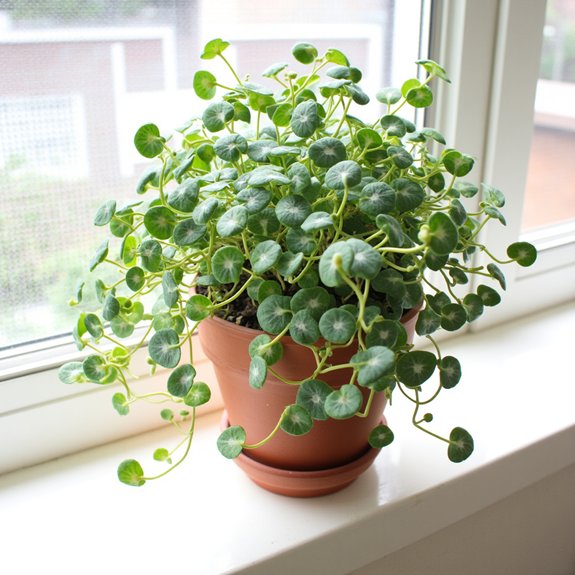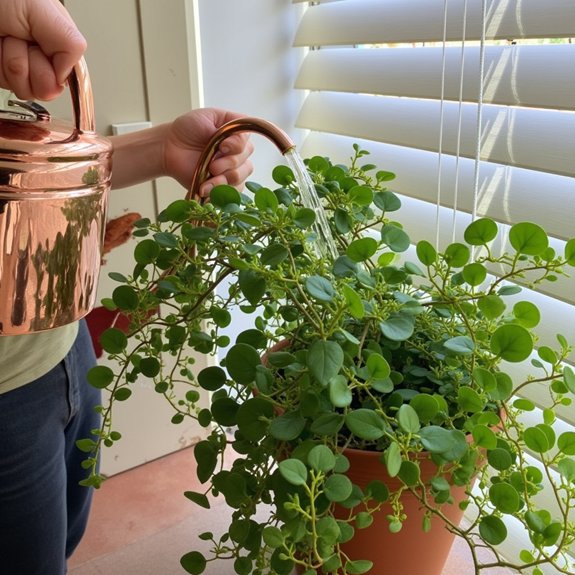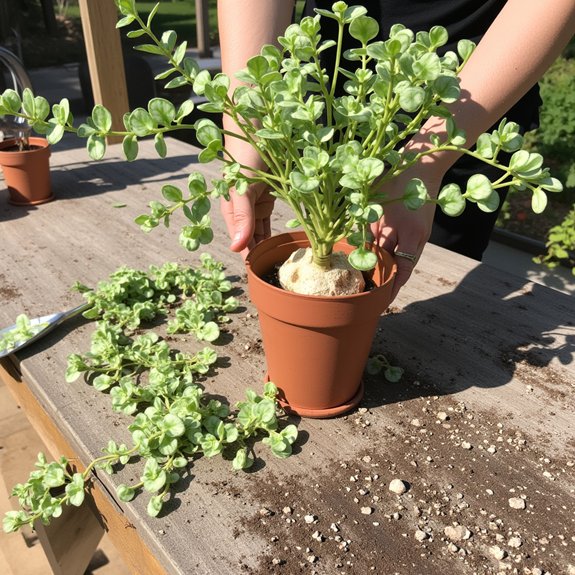Most plant enthusiasts discover Peperomia Hope through its cascading trails of succulent-like leaves, but keeping this charming houseplant thriving requires more finesse than typical care guides suggest. This compact trailing beauty, with its round, fleshy foliage and delicate stems, demands specific attention to light exposure, watering frequency, and environmental conditions. While many assume its succulent appearance means drought tolerance, the reality involves a delicate balance that separates successful growers from those watching their plants slowly decline.
Contents
- 1 Understanding Your Peperomia Hope: Origins and Characteristics
- 2 Creating the Perfect Growing Environment
- 3 Watering and Feeding Your Trailing Beauty
- 4 Propagation Techniques for Expanding Your Collection
- 5 When and How to Repot Successfully
- 6 Troubleshooting Common Plant Problems
- 7 Styling and Display Options for Maximum Impact
Understanding Your Peperomia Hope: Origins and Characteristics

Botanical enthusiasts often discover that Peperomia Hope represents one of the most rewarding introductions to the diverse Peperomia family. This charming houseplant showcases fascinating hybrid origins, developed in 2007 by Dutch grower Josephus van der Velden through crossing Peperomia deppeana and Peperomia quadrifolia.
The distinctive leaf characteristics set this variety apart from its parent plants. Thick, glossy, coin-shaped leaves display striking light venation patterns, measuring slightly larger than typical Peperomia deppeana foliage. These succulent-like leaves grow along trailing stems that reach 6 inches or longer, creating an elegant cascading effect.
Native to Central and South America’s tropical regions, this adaptable trailing plant spreads approximately 8 inches wide, making it perfect for hanging displays.
Creating the Perfect Growing Environment
Understanding these origins and characteristics naturally leads to mastering the environmental conditions that allow Peperomia Hope to flourish indoors. Proper lighting conditions require bright, indirect sunlight—think near a window with filtered light. Direct sun scorches those glossy leaves, while insufficient light creates leggy growth.
Temperature consistency matters too. Keep your plant between 65°F and 75°F, avoiding cold drafts and sudden temperature swings. Humidity levels should hover around 40-50%, easily achieved in most homes without extra effort.
The soil foundation deserves equal attention. Mix potting soil, perlite, and coconut coir for ideal drainage and aeration.
Watering and Feeding Your Trailing Beauty

Two simple practices—proper watering and strategic feeding—determine whether Peperomia Hope thrives or merely survives in indoor conditions. Spring and summer watering frequency should occur every couple of days, allowing the top inch of soil to dry completely between sessions. Winter requires dramatically reduced watering—once weekly or biweekly works best.
Monthly fertilization during growing season maintains ideal nutrient balance without overwhelming these delicate trailing plants. Always check soil moisture by inserting your finger directly into the potting mix, since overwatering causes more problems than underwatering. Strategic timing prevents root rot while supporting healthy, cascading growth patterns.
Propagation Techniques for Expanding Your Collection
Several propagation methods allow enthusiasts to multiply their Peperomia Hope collection with minimal effort and maximum success rates. Stem cuttings represent the most reliable approach, requiring cuts of at least 4 inches above leaf nodes. Remove lower leaves, then root in water or plant directly in moist soil.
Leaf cuttings offer an alternative technique for patient growers. Select healthy leaves, cutting close to the stem, then place in slightly damp growing medium. Both methods require consistent moisture without waterlogging.
New growth typically emerges within several weeks, though patience remains essential for successful propagation results.
When and How to Repot Successfully

When should gardeners consider repotting their Peperomia Hope? Key timing signs include roots growing through drainage holes or stunted growth patterns. These repotting tips guarantee success: choose a pot one size larger, use well-draining soil mix with perlite and coconut coir. Gently remove the plant, avoiding root disturbance during transfer. The fresh environment requires careful monitoring for several weeks post-repotting. Most Peperomia Hope plants need repotting infrequently, making this maintenance task relatively simple. Watch for adjustment signs like new growth or improved leaf appearance, indicating successful establishment in the larger container.
Troubleshooting Common Plant Problems
Even well-established Peperomia Hope plants occasionally develop issues that puzzle their owners. Overwatering remains the primary culprit behind most leaf issues, causing yellowing, mushy stems, and eventual root rot. Allow soil to dry completely before watering again.
Common pests like mealybugs create wilting symptoms, while scale insects appear as hard brown spots on leaves. Treat mealybugs with rubbing alcohol, scrape off scale insects before applying insecticidal soap. Aphids target new growth, requiring soapy water treatment.
Legginess indicates insufficient light exposure, demanding relocation to brighter, indirect sunlight for compact growth recovery.
Styling and Display Options for Maximum Impact
Peperomia Hope’s trailing nature and compact foliage make it an exceptionally versatile plant for creative indoor displays. Its 6-inch trailing stems create stunning cascading effects in hanging baskets, elevated shelves, or macrame holders. The glossy, coin-shaped leaves add sophisticated texture to plant aesthetics in any room.
Display arrangements benefit from the plant’s compact 8-inch spread, making it perfect for small spaces. Position it on bookshelves, windowsills, or plant stands where trailing stems can flow freely. The thick, glossy foliage contrasts beautifully with other houseplants, creating dynamic visual interest in grouped arrangements.
